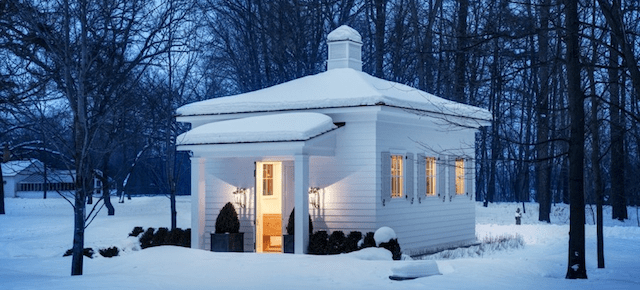The rest of the world may think of the US as a nation full of oversized people living in oversized houses, but the AIA Chicago wants to change the perception that American architecture is always too big. Its Small Projects Award (tagline: Not Everyone Needs a Skyscraper) focuses on something most other award programs neglect: tiny buildings.
The winners range from the larger end of the spectrum (93 square metres to 465 square metres) to the truly tiny (under 46 square metres). But even the huskiest winners are still average by American standards: The average home size in the US right now hovers at over 185 square metres. But, of course, what interested us the most are the tiniest of the tiny — check out a few below.

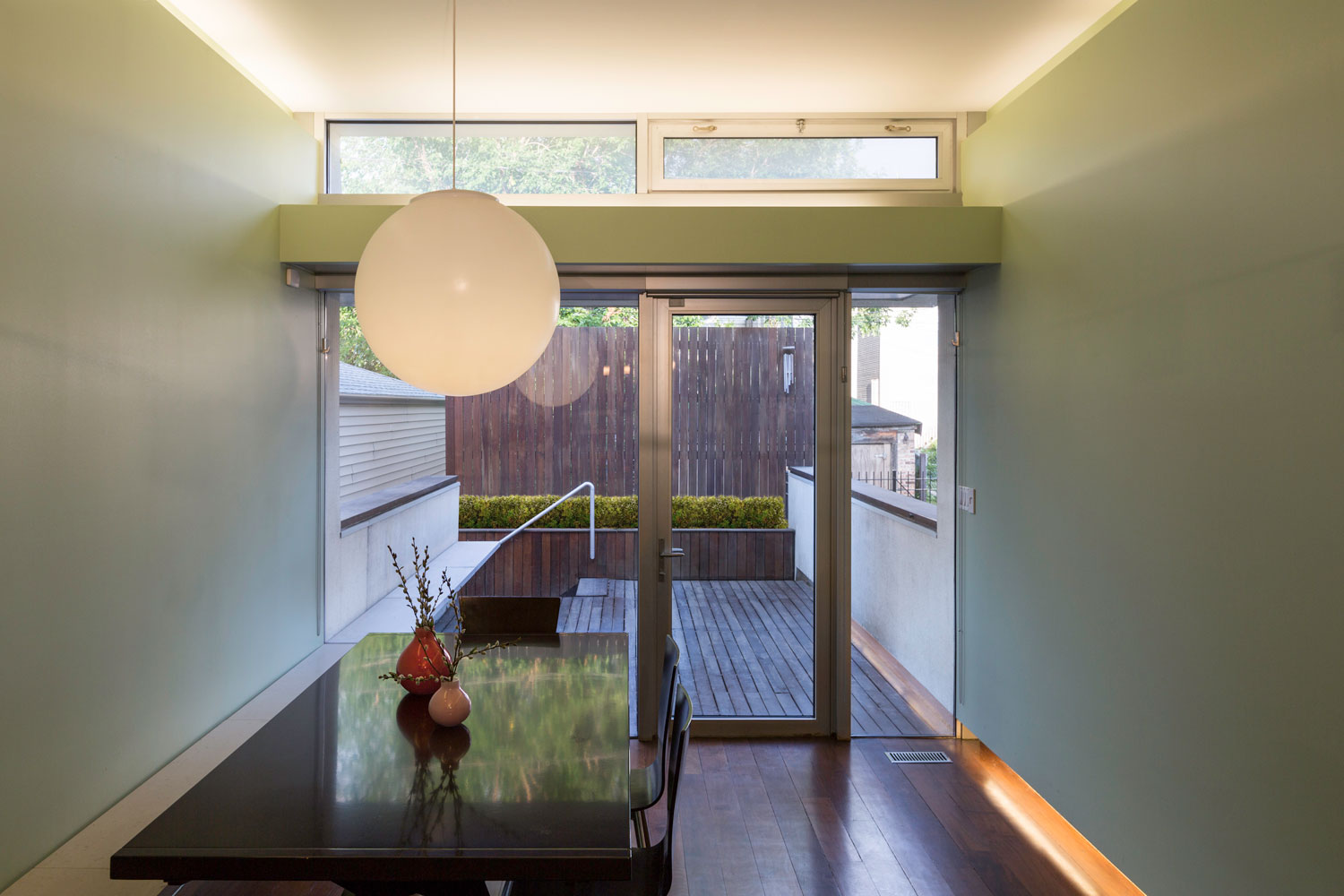
The less-than-93sqm LightBox, designed by makeArchitecture, re-attached an 1880s masonry row house to its backyard with this beautiful addition, which cost only $US160,000:

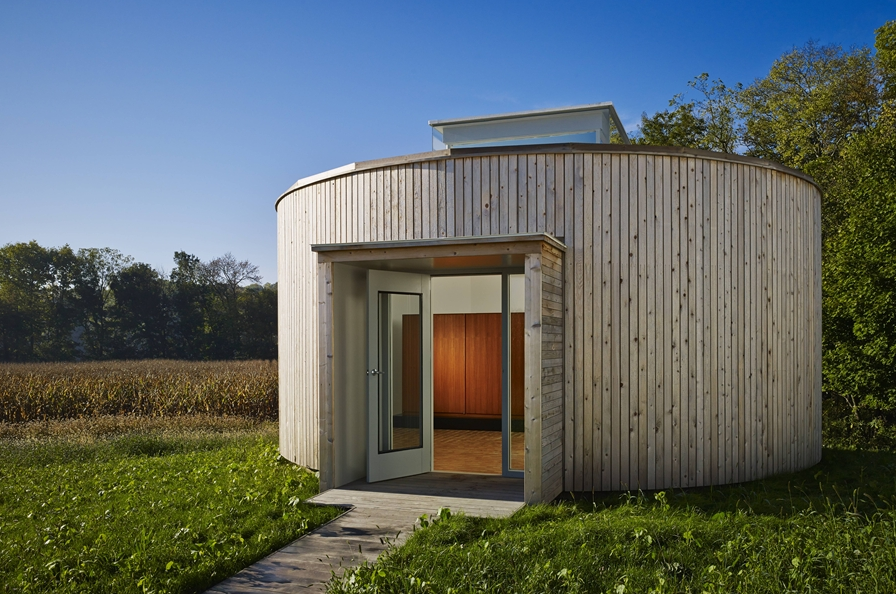
Luxurious and new at the time of the nearby Columbian Exposition, the building was crudely divided four decades later. A contractor recently restored its single occupancy but cut the rear of the building off from light and air. In his defence, the rear yard was a gravel pad. We set out to create an inside/outside space employing effects with light, colour and material that would create a volume for family, community and mindfulness. Structure, sustainability and material all work together to create a coherent and compelling, integrated whole. For instance, the light shelf is a device used to reflect light deep into the interior. It is also used as a gusset to brace the steel frame of the addition.
Remember how we told you about the repeated flooding of Mies van der Rohe’s Farnsworth House? Well, when the building floods, its interiors have to be cleared out — but the huge wardrobe of the client, Edith Farnsworth, was too big to move in case of future floods. So students from the Illinois Institute of Technology designed a permanent exhibition space for it:

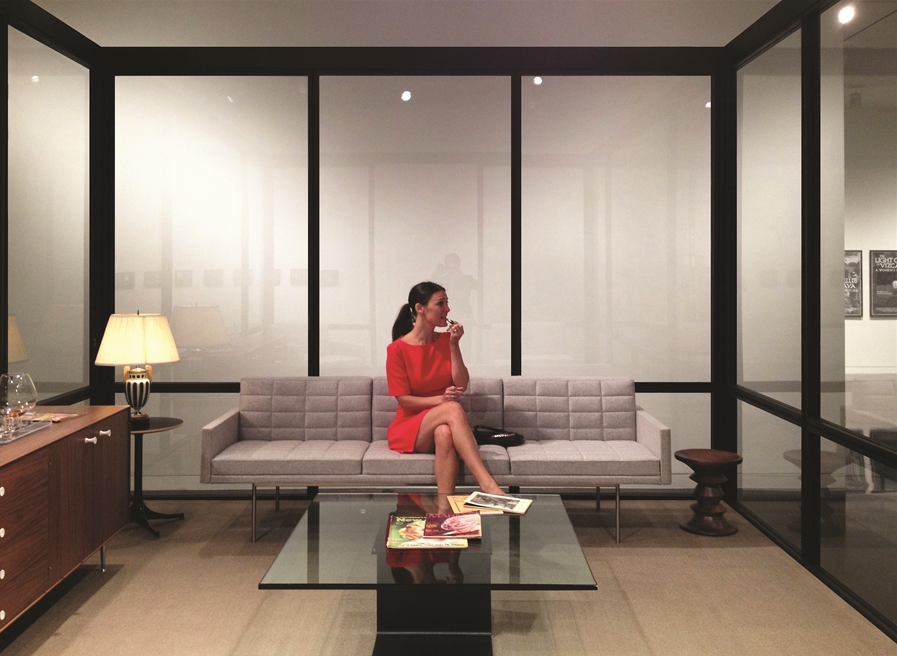
This project was presented to fourth and fifth year architecture students who designed an adaptable exhibition space that solved Farnsworth’s need to display the wardrobe while being able to host events, lectures, and exhibitions… The costs of the project were completely fundraised by the students through donations and the help of local businesses. Much creativity went into the recycling and conservation of material, including using all of the lumber scraps from the project to create an end-grain floor.
Designed by Vinci | Hamp Architects for a Chicago artist who used it as a performance space, this glass vitrine sits in the Arts Club of Chicago’s main gallery, next to its historic Mies van der Rohe staircase:
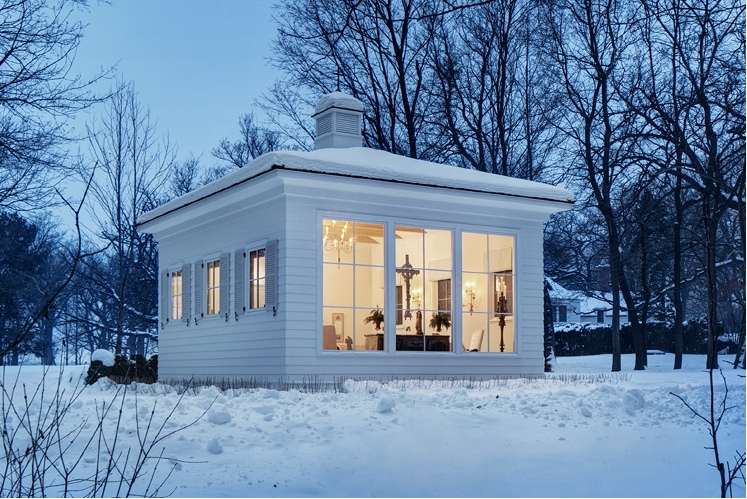
The pavilion was raised on a platform, emphasising its role as a stage and identifying it as an independent component separate from the original building. The black painted structure suggests a bay of Mies’ high-rise architecture, creating the sensation of peering into a living room. Modernist furnishings evoke the post-war era when most of Mies’ residential towers were designed. Modular panels articulated with reveals comprise the framework.
Northworks Architects + Planners designed this $US150,000 family chapel in northern Illinois:


While the simple details of the exterior reinforce the colonial architecture established by the adjacent farm house and outbuildings, the experience within the chapel is intended to inspire a spiritual connection to the surrounding woods, open fields and what lays beyond.
It’s called “the Cave” for a reason: This less-than-46sqm nest invites visitors to alter its interior with “cave paintings” at the Young at Art Museum:
Spanning the entry as the first spatial encounter, the Cave’s architectural and iconic presence welcome visitors to explorative art-making and social engagement. The column-free wood structure is faceted and clad with super white matte surfacing, designed to express mystery and discovery, enclosure and aperture, the ancient and the new. Drawn inside the intimate 250SF interior, visitors make their mark analogous to early cave painting, using body-sized pin-presses or inscribing foil wall panels.
This is just a small sampling of the nominees and winners — check them all out here.
